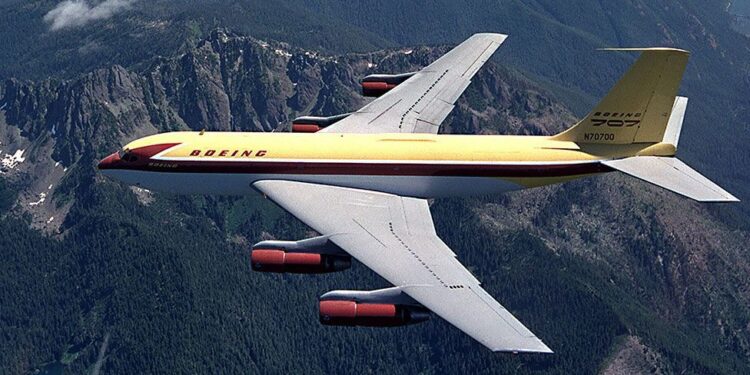In 1958, the aviation industry underwent a revolutionary transformation with the introduction of the Boeing 707, the world’s first commercially successful jetliner. This iconic aircraft not only altered the way people traveled but also paved the way for the modern era of commercial aviation.
The Boeing 707 marked a significant departure from the propeller-driven aircraft of its time. Powered by four powerful Pratt & Whitney JT3C turbojet engines, the 707 was capable of reaching speeds of up to 600 miles per hour, nearly twice the speed of its piston-engine predecessors. This breakthrough in speed dramatically reduced travel times and made long-distance air travel more accessible and affordable.
The 707 also brought about a new level of comfort and luxury for passengers. With a spacious and pressurized cabin, it could accommodate up to 189 travelers, and it offered amenities like in-flight meals and climate control. This set a new standard for passenger experience, making air travel more appealing to the general public.
Furthermore, the Boeing 707 played a crucial role in expanding global connectivity. Airlines could now offer non-stop, transcontinental flights, eliminating the need for multiple layovers. This not only made international travel more convenient but also fostered economic and cultural exchange across borders.
The 707 was not only a commercial success but also played a pivotal role in the military. It served as the basis for the KC-135 Stratotanker, a military tanker aircraft, and the E-3 Sentry, an airborne warning and control system aircraft. These adaptations extended the 707’s impact beyond the realm of civilian aviation.
The Boeing 707’s legacy endures in the form of its descendants, including the 727, 737, 757, and 767 series, which have been integral to the growth of commercial aviation over the decades. While the 707 itself is no longer in commercial service, it remains a symbol of innovation and progress in aviation history.
In 1958, the Boeing 707 transcended the limits of air travel, ushering in a new era of speed, comfort, and global connectivity. Its impact is still felt today, as millions of passengers continue to benefit from the innovations it introduced to the world of aviation.
newshub



Recent Comments